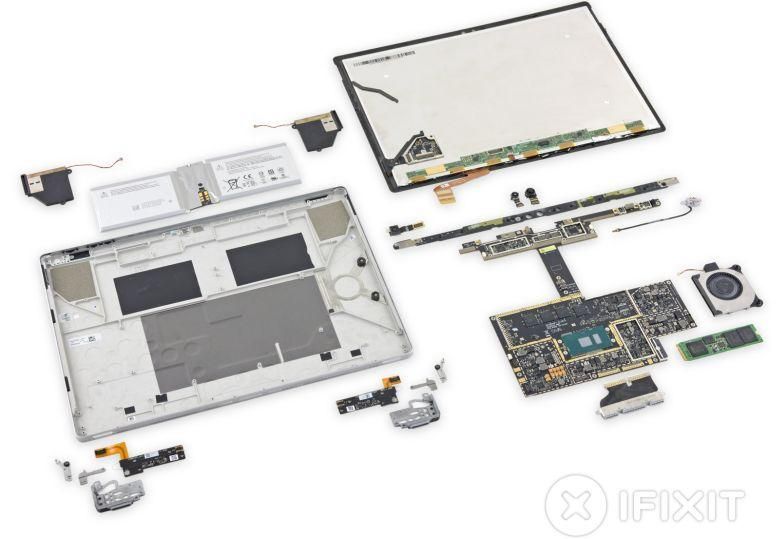For a versatile line of detachable 2-in-1 tablet/laptop hybrids, Windows-powered Microsoft Surfaces have always been a great pain to disassemble and put back together for DIY enthusiasts. The very first member of the convertible family, running Win RT, scored a disappointing 4 out of 10 repairability points around three years ago, and believe it or not, it was all downhill from there for the “laplet” roster.
The original Surface Pro, released in early 2013, barely got a 1 mark in iFixit’s comprehensive teardown review, the second and third-gen remained physically impossible to repair at home, while the Surface Pro 4 managed to somehow amass 2 points.
If you maybe hoped Redmond’s first “ultimate laptop”, the Surface Book, would break new ground in handymen convenience, we’re sorry to inform you we’re looking at another minimal grade. Though sleek and smooth in appearance, the 13.5-incher features more strong adhesive than you can imagine under the hood(s), blocking the user from swapping or upgrading even the most basic components.
There’s practically nothing modular about the Microsoft Surface Book, although technically, you are able to replace the SSD with relative ease… once you breach the super-difficult to open mantle. If the display shatters, the cover cracks, any of the two batteries don’t hold a full charge like they used to, or even the ambient light sensor, front-facing camera or microphone present functionality defects, throw away your personal screwdrivers, consult a professional, and get ready to break the old piggy bank.
The same goes for processor or RAM upgrades, so if you want to hold onto the Windows 10 Pro hybrid computer for more than a couple of years, don’t be cheap, and pick one of the highest-end configurations. Intel Core i7 and at least 8 gigs of memory should have you covered.
Source: iFixit

